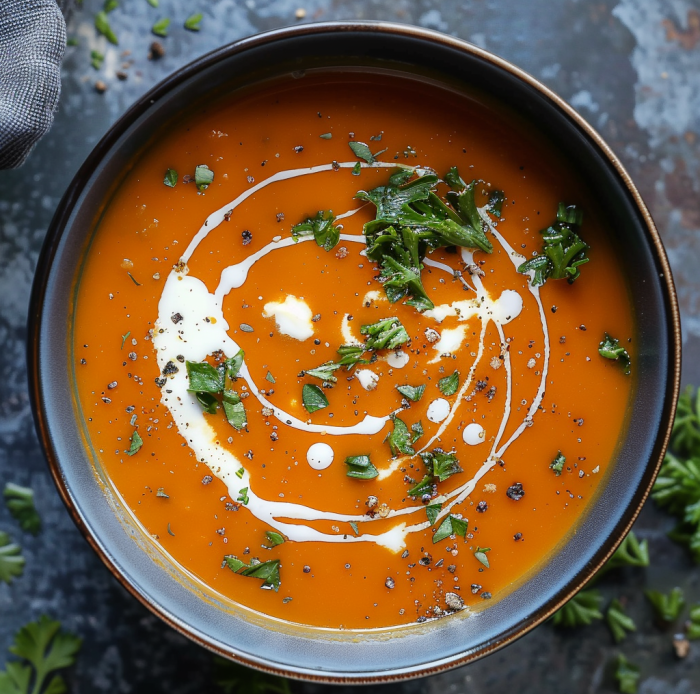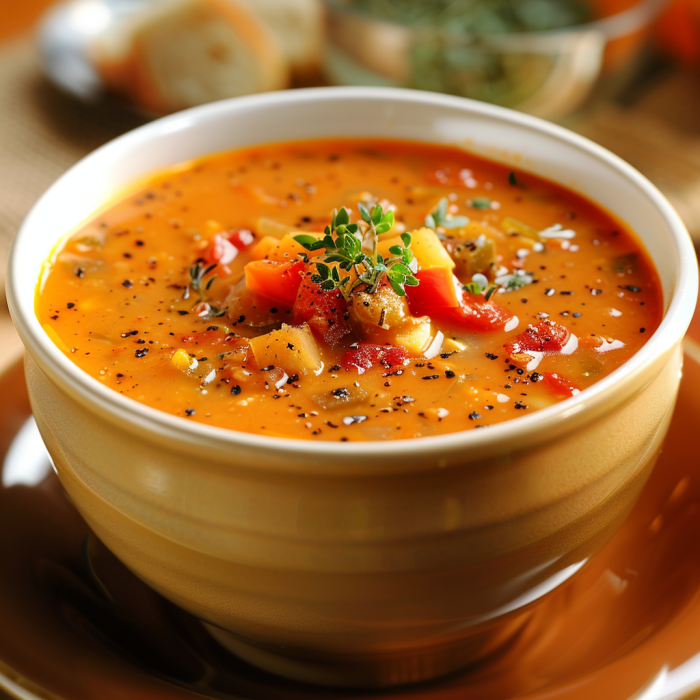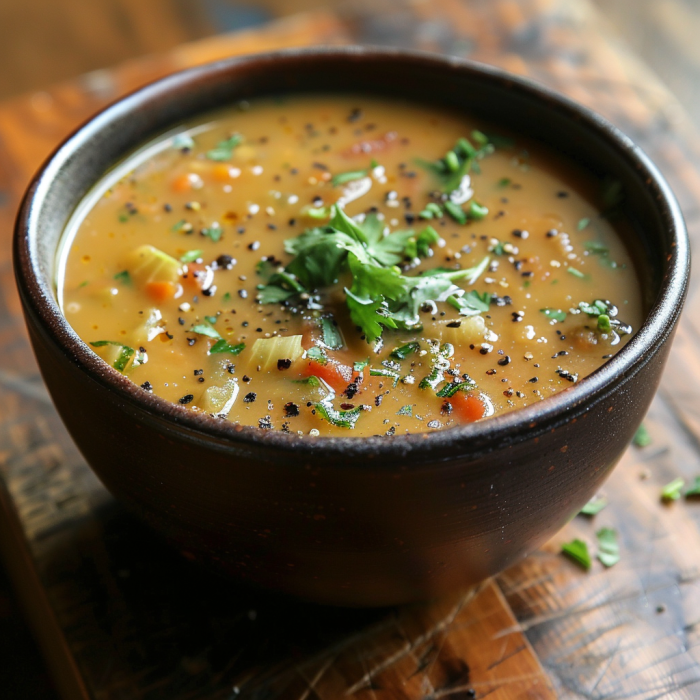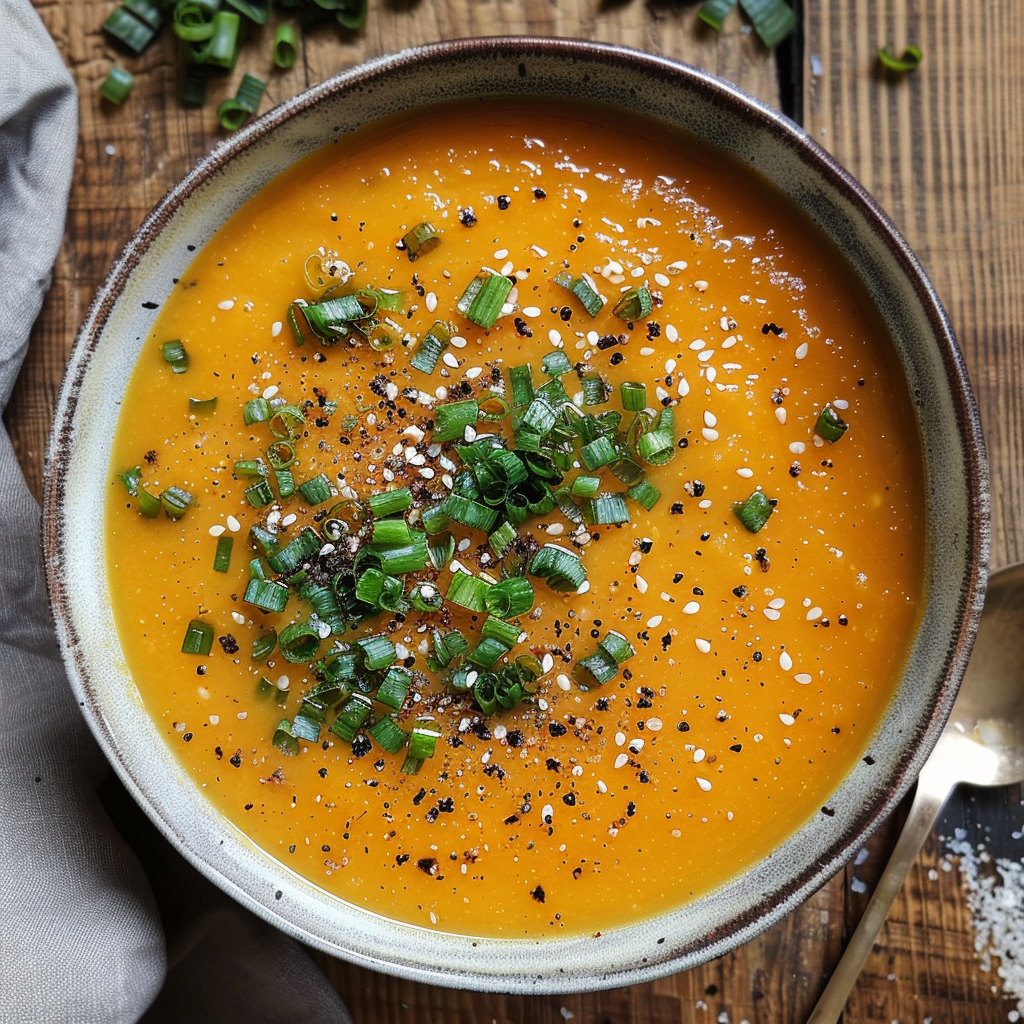
Ever wonder why your favorite soup tastes different in high-altitude cities or humid places? It’s because of abiotic factors like temperature, humidity, and altitude. These elements can change how your food turns out. Science says 70% of cooking problems in extreme places come from ignoring these factors.
This guide helps you use weather and environment to your advantage in cooking soups. It shows how to make your soups taste great no matter where you are. You’ll learn how small changes can make a big difference, turning every soup into a success.
Key Takeaways
- Abiotic factors like altitude and humidity directly affect soup texture and cooking time.
- Soup recipes abiotic factor focus on ingredient resilience to environmental changes.
- Adjusting heat and prep methods unlocks success in any climate.
- Learn how temperature impacts spice absorption in classic and vegetarian soups.
- Simple techniques solve 90% of environment-related cooking issues.
Understanding How Abiotic Factors Influence Soup Preparation
When making abiotic factor cooking recipes, you need to think about the environment. Things like temperature, humidity, altitude, and air pressure affect how ingredients cook. For example, at high altitudes, water boils at a lower temperature because of the lower air pressure. This means soups might simmer longer, changing cooking times in abiotic factor cooking recipes.
- Temperature: Extreme heat or cold changes how fast liquids evaporate. In dry places, soups can thicken quicker, so you might need to add more broth.
- Humidity: Wet environments slow down water loss, so soups simmer longer. In dry areas, you need to stir soup quickly to avoid burning.
- Altitude: At 5,000 feet, water boils at about 90°C (194°F), making ingredients cook slower. Use tougher vegetables like potatoes or carrots in such conditions.
Light also plays a role. Direct sunlight in summer kitchens can warm ingredients too fast, affecting the broth’s consistency. Chefs in places like Denver or mountainous areas adjust soups by adding more liquid or cooking them longer. By understanding these factors, you can make abiotic factor cooking recipes work in any environment. This way, you get consistent results whether you’re cooking in a humid city or a dry plateau.
Essential Ingredients That Thrive in Various Abiotic Conditions
When making soup recipes abiotic factor, picking the right ingredients is crucial. We need to choose based on temperature, humidity, and other factors. This ensures our soups taste great every time.
Selecting Vegetables Based on Temperature Tolerance
Vegetables handle heat and cold differently. For abiotic factor recipe success:
- In hot climates: Choose carrots, tomatoes, or peppers. They stay fresh and full of nutrients.
- In cold climates: Go for potatoes or kale. They keep their flavor well.
Swap out seasonal veggies if they’re not available.
Protein Sources That Adapt to Different Environments
Choosing the right protein is important to keep it fresh. Here’s what works:
| Protein | Best Environments | Preservation Tips |
|---|---|---|
| Beef | Cold, dry climates | Freeze in vacuum-sealed packs |
| Lentils | Hot, humid areas | Use pre-cooked, canned versions |
| Tofu | Urban or varied climates | Store in sealed containers with brine |
Herbs and Spices That Enhance Flavor in Any Condition
Keeping flavors stable is key. Herbs like rosemary and thyme stay good through temperature changes. Spices like cumin and paprika keep their scent in any weather. Keep dried herbs in airtight containers and fresh ones in the fridge.
For example, basil loses flavor in cold. So, use dried basil in cooler places.

“The right herbs turn ordinary ingredients into extraordinary soups, no matter the environment.” – Chef Maria Gonzalez, Culinary Institute of Sustainable Cooking
By choosing ingredients that fit your climate, you can make delicious abiotic factor recipe soups anywhere.
Kitchen Equipment Needed for Abiotic Factor Cooking
Mastering abiotic factor cooking recipes requires the right tools. These tools help you cook well in different environments. Here’s what you need to succeed:
- Pressure Cookers: Tools like the Instant Pot are great for high-altitude areas. They keep pressure to cook ingredients evenly, even in thin air.
- Insulated Cookware: Stainless steel or vacuum-sealed pots (e.g., Cuisinox) keep heat in cold places. They prevent soups from cooling down too fast.
- Cast Iron Pots: Brands like Lodge are perfect for cooking in changing temperatures. They don’t warp, even with extreme heat changes.
- Temperature/Humidity Meters: Devices like the ThermoPro TP50 track real-time data. They help you adjust cooking times and temperatures as needed.
For precise control, get a cast iron Dutch oven. It helps balance heat in changing climates. Look for affordable options like Tramontina. Always match your tools with abiotic factor cooking recipes that list equipment needs.
- Pressure regulators for altitude adjustments
- Non-stick pans for low-moisture regions
- Collapsible coolers to store prepped ingredients in extreme heat
Invest in versatile gear for any environment. Whether using a slow cooker for steady warmth or a portable burner in remote areas, the right equipment makes environmental challenges easier. It helps you make perfect soups.
Soup Recipes Abiotic Factor: Master Recipes for Any Environment
Adapting soups to environmental changes starts with these adaptable recipes. Each dish balances flavor and flexibility. This ensures success in any climate or altitude. Let’s explore meals that thrive under pressure.
Classic Meaty Stew Abiotic Factor Recipe
For the meaty stew abiotic factor, combine 2 lbs stew meat, 3 carrots, 2 potatoes, and 1 onion in a pot. Add 4 cups broth, 1 tsp salt, and bay leaves. Simmer until tender, adjusting cooking time by 20% at high altitudes. Tips:
- Colder climates: Simmer slower for softer textures
- Humid areas: Reduce broth by 25% to avoid sogginess
Vegetarian Options for Challenging Environments
Plant-based eaters can rely on hearty ingredients like lentils, mushrooms, and winter squash. For a quick base, sauté onions, add 1 cup quinoa, 3 cups vegetable broth, and simmer 20 minutes. Stir in spinach or kale at the end. Use sturdy vegetables that maintain texture in extreme heat or cold.
Quick and Easy Abiotic Factor Greyeb Soup
The abiotic factor greyeb is a fast-cooking broth-based soup. Combine diced zucchini, corn, and diced tomatoes in a pot. Add 4 cups water, 1 tsp cumin, and a dash of lime juice. Simmer 15 minutes. Pro tip:

“For high altitudes, bring water to a boil first before adding ingredients.”
Adjust cooking time by 10% in dry climates for thicker consistency.
How Temperature and Humidity Affect Your Soup Outcomes
Mastering abiotic factor cooking recipes means knowing how the environment affects your cooking. Small changes in temperature or humidity can change the texture, flavor, and safety of your soup. Here’s how to adjust effectively.
High Altitude Adjustments for Perfect Consistency
At elevations over 2,000 feet, water boils at lower temperatures, slowing cooking. Follow these adjustments for your abiotic factor recipe:
- Increase cooking time by 5% for every additional 1,000 feet.
- Add 10-15% extra liquid to prevent drying.
- Use a pressure cooker to maintain optimal heat retention.
Adapting Cooking Times for Extreme Climates
In extreme heat or cold, timing changes:
- Hot Climates: Reduce heat by 25% and use insulated pots to avoid overcooking.
- Cold Climates: Preheat ingredients and extend simmering by 10-15 minutes.
Always check with a thermometer to ensure safe internal temperatures.
Storage Solutions in Variable Conditions
Keep your soup fresh with climate-specific strategies:
| Climate Type | Storage Tips | Shelf Life |
|---|---|---|
| Hot & Humid | Use airtight containers; refrigerate within 2 hours | 3 days |
| Cold & Dry | Freeze in portioned bags; thaw overnight | Up to 3 months frozen |
| Variable | Monitor temperature hourly; rotate stock weekly | 2-4 days |
These abiotic factor cooking recipes need precise adjustments. Your soup’s success depends on matching techniques to your environment.
Seasonal Adaptations for Your Favorite Soups
Adjusting soup recipes abiotic factor ensures your soups taste great all year. Seasons change temperature, humidity, and what’s available. Let nature help you pick the right ingredients for each season.
“The best soups embrace the season, not just the ingredients,” says Chef Maria Lopez of GreenHarvest Kitchen. “Your kitchen adapts, and so should your pot.”
In winter, choose hearty ingredients like root vegetables and slow-cooked broths. Thicker soups keep you warm. Use carrots, potatoes, and winter squash, which do well in cold.
Add warming spices like cinnamon or nutmeg to fight off the cold.
Spring is for lighter soups and fresh greens. Use tender asparagus or peas when it’s mild. Quick simmering helps keep nutrients in.
Spring’s humidity means less liquid to avoid sogginess.
Summer’s heat calls for cool soups. Cucumber, tomatoes, and herbs like cilantro are perfect. Blend for smooth gazpachos or add ice for a chill.
Summer produce spoils fast, so check freshness daily.
Fall brings crisp air and earthy flavors. Mushrooms, onions, and apples add depth. Simmer soups longer for richer taste.
Store dried beans and grains for fall’s harvests like pumpkin or lentils.
Follow these tips to match your soup recipes abiotic factor with nature. Whether it’s a winter stew or a summer gazpacho, let the environment guide you.
Troubleshooting Common Issues with Abiotic Factor Recipes
Mastering the abiotic factor recipe means being flexible. Changes in the environment can turn even the best cooks into problem-solvers. Let’s tackle three key areas to keep your soups perfect.
Fixing Texture Problems in Challenging Environments
At high altitudes, soups can thin out quickly? Try adding cornstarch or rice to thicken them. If your abiotic factor greyeb stew is too thick, slowly add broth. For grainy textures, blend some batches or strain the solids before serving. Here’s how to tweak:
- Thin soups: Mix a slurry of water and flour for quick thickening.
- Too thick: Let it simmer uncovered to reduce its thickness.
- Grainy consistency: Blend half the batch for a smoother soup.
Flavor Adjustments for Variable Conditions
Humidity can dull the taste of salt, while dry air makes spices stronger. Taste often and:
- In dry areas, add salt little by little.
- Reduce acidic ingredients by 25% at high altitudes.
- In damp, cold weather, add soy sauce to boost umami.

“Always adjust seasoning after 15 minutes of cooling—the flavors develop as they rest.” – Chef Maria Torres, Abiotic Cuisine Institute
Quick Fixes for Environmental Mishaps
Too much salt? Mix in unsalted broth to dilute it. Burned pots? Scrape off the bottom and start over with fresh liquid. Undercooked veggies? Steam them first, then mix them back in. Remember, wind or humidity changes how things cook—adjust as needed.
Conclusion: Creating Delicious Soups Regardless of Environmental Conditions
Kitchens face many challenges, but knowing how to handle them opens up new possibilities. Whether you’re making a hearty stew or trying out new soup recipes, success comes from adapting to your kitchen. By picking the right ingredients for your climate, adjusting cooking times, and using the right tools, you can overcome any obstacle.
For example, a meaty stew can be perfected by adjusting the simmering time for altitude. Meanwhile, quick grey soup can be made in no time. Don’t let weather or location stop you from being creative. See each condition as a chance to improve your cooking.
Even in tough climates, you can achieve great results by balancing flavors and textures. Begin by testing recipes in your kitchen, then make adjustments as needed. Share your findings with other cooks to exchange tips. As you get better, you’ll feel more confident in making any kitchen situation a success.
Next time it’s cold or hot outside, you’ll be ready to make comforting soups that show off your kitchen’s unique touch. Keep exploring, be bold in your adaptations, and let every environment spark your next culinary masterpiece.
FAQ
What are abiotic factors and how do they impact soup preparation?
Abiotic factors are non-living things like temperature and humidity. They can change how soups cook and taste. Knowing these factors helps you make your soups better.
How do I adjust soup recipes for high-altitude cooking?
At high altitudes, soups cook faster. You might need to cook them 5% longer for every 1,000 feet above 2,000 feet. Also, add more liquid to stop soups from getting too thick.
What vegetables work best in varying temperature climates for soup?
In hot weather, use veggies like tomatoes and zucchini. In cold weather, carrots and squash are best. This makes your soups taste great everywhere.
Are there specific cooking tools I should use for different abiotic factors?
Yes, some tools are better for certain conditions. Pressure cookers are great for high altitudes. Insulated pots keep temperatures steady. A thermometer helps you adjust cooking temperatures.
Can you share a soup recipe that works in various environmental conditions?
Try the Classic Meaty Stew recipe. It works well in different humidity and altitude levels. Adjust the liquid and cooking time for high altitudes to get a rich flavor.
How does humidity affect cooking times for soups?
High humidity makes soups cook longer. Watch how your soup thickens and adjust cooking times. Use a humidity meter to measure moisture levels.
What are good storage solutions for soups in variable conditions?
Use airtight containers to keep soups fresh. Refrigerate or freeze them quickly. Always check the shelf-life of ingredients for your climate.
How can I troubleshoot soup texture problems caused by environmental factors?
For thin soups, add cornstarch or flour mixed with water. For thick soups, add broth or water slowly. These fixes help with texture issues caused by the environment.
What herbs and spices retain flavor in varying environmental conditions?
Dried herbs like oregano and thyme keep their flavor well. Store them in a cool, dark place. Fresh herbs need careful handling in humid weather.



